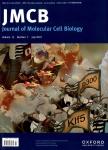Role and therapeutic potential of liquid-liquid phase separation in amyotrophic lateral sclerosis
作者机构:Department of NeurosciencesExperimental Neurology and Leuven Brain Institute(LBI)KU Leuven-University of Leuven3000 LeuvenBelgium Laboratory of NeurobiologyVIB-KU Leuven Center for Brain&Disease Research3000 LeuvenBelgium Switch LaboratoryVIB-KU Leuven Center for Brain&Disease Research3000 LeuvenBelgium
出 版 物:《Journal of Molecular Cell Biology》 (分子细胞生物学报(英文版))
年 卷 期:2021年第13卷第1期
页 面:15-28页
核心收录:
学科分类:0710[理学-生物学] 071010[理学-生物化学与分子生物学] 1002[医学-临床医学] 07[理学]
基 金:Research of the authors is supported by VIB KU Leuven(Cl and‘Opening the Future’Fund) the‘Fund for Scientific Research Flanders'(FWO-Vlaandere n) the Agency for Irmovation by Science and Technology in Flanders the Thierry Latran Foundation the*Association Beige contre les Maladies n euro-Musculaires (AB MM) the Muscular Dystrophy Association(MDA) Target ALS the ALS Liga Belgie(A Cure for ALS) and the ALS Association(ALSA).D.P.is funded by the VIB International Life Sciences PhD Program.V.B.is supported by a postdoctoral fellowship from the FWO-Vlaanderen.G.O.ack no wledges funding by the Research Foundation Flan ders(FWO)—project nr.G.0328.16N
主 题:phase separation stress granule motor neuron ALS therapy
摘 要:Amyotrophic lateral sclerosis (ALS) is a late-onset neurodegenerative disease selectively affecting motor neurons, leading to pro-gressive paralysis. Although most cases are sporadic,-10% are familial. Similar proteins are found in aggregates in sporadicand familial ALS, and over the last decade, research has been focused on the underlying nature of this common ***, TDP-43 inclusions are found in almost all ALS patients, while Fus inclusions have been reported in some familial ALSpatients. Both TDP-43 and FUS possess ‘low-complexity domains (LCDs) and are considered as ‘intrinsically disordered proteins ,which form liquid droplets in vitro due to the weak interactions caused by the LCDs. Dysfunctional ‘liquid-lquid phase separa-tion (LLPS) emerged as a new mechanism linking AlS-related proteins to pathogenesis. Here, we review the current state ofknowledge on ALS-related gene products associated with a proteinopathy and discuss their status as lLPS proteins. n addition,we highlight the therapeutic potential of targeting LLPS for treating ALS.



